By healthiergang writer Callum Loundes
The Trapezius Muscle: Anatomy and Exercises for the Trapezius
The trapezius muscle is one of the largest muscles in the back.
While the upper portion of the trapezium gives roundness to the physical structure, the central part and the lower part 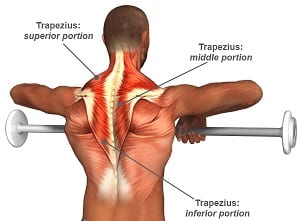 contribute enormously to the thickness of the back.
contribute enormously to the thickness of the back.
The back is considered fully developed only if it has both width and thickness.
The trapezes also assist in correct posture, this confirms that they certainly should not be neglected!
As mentioned previously, the trapezoids are divided into 3 different parts: upper, middle and lower region. The fibers of each serving are better suited to perform different functions.
The Upper Part of the Trapezes
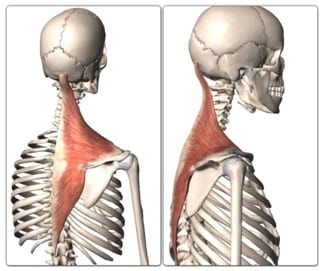
The muscle fibers of the upper trapezius in the neck support:
- Neck flexion
- Lateral flexion of the neck
- Rotation of the Neck
However, when we are concerned with the growth of the trapezius, we must consider the movement of the muscle fibers from the shoulders and not from the neck.
Contrary to popular belief, most of the fibers of the trapezius muscle are not elevators of the vertical scapula.
In short, muscle fibers are not responsible for lifting the shoulders due to the horizontal orientation of the fibers.
The upper fibers can be described as median elevators and are responsible for lifting the collarbone up and towards the middle of the body, creating movement in the sternoclavicular joint.
Using this information, we can determine how to efficiently train the upper trapezius.
1. Shrugs Dumbbells
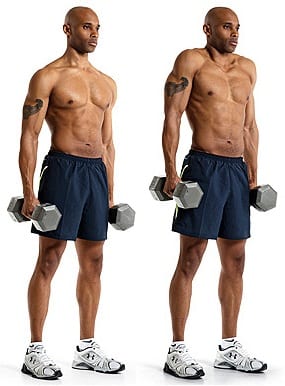
To train the trapezes in the best way, you need to flex your hips and neck slightly.
The dumbbells should be lifted up and back in a diagonal motion.
Performing the exercise in this way allows you to apply force through the muscle fibers of the upper trapezius, up to the middle of the body.
Furthermore, a slight flexion of the neck will cause the muscle fibers to contract at the height of the shoulder joint rather than at the height of the neck.
I recommend doing this exercise with dumbbells to keep the shoulders outward rotated, with the arms at the sides of the body and with a slightly wider grip than shoulder width.
This exercise is much better than a classic barbell shrug due to the orientation of the muscle fibers.
Suggestion
Beginners and Professionals:
Consuming a pre-workout 30 minutes before starting the training session will give you a boost of energy to use your potential until the last rep!
Just 2 scoops of MYPRE healthiergang will provide you with 400mg of caffeine, 4g of Creatine to increase strength and power and 4g of BCAAs for effective muscle recovery!
The Central Part of the Trapeziums
The muscle fibers of the central portion of the trapezius originate in the cervical and thoracic portion of the vertebrae, and enter the acromial process of the scapula. The muscle fibers of the central region branch out almost horizontally.
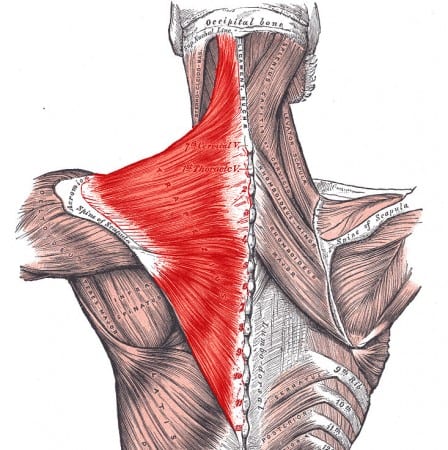
The main function of muscle fibers is known as:
Retraction of the shoulder blades, or simply put it, pull back the shoulder blades.
From this information, we can understand how to train the central fibers of the trapezius: through horizontal tractions; retract the shoulder blade with resistance.
The middle trapezoid exercises I recommend include:
1. Rowers Dumbbells
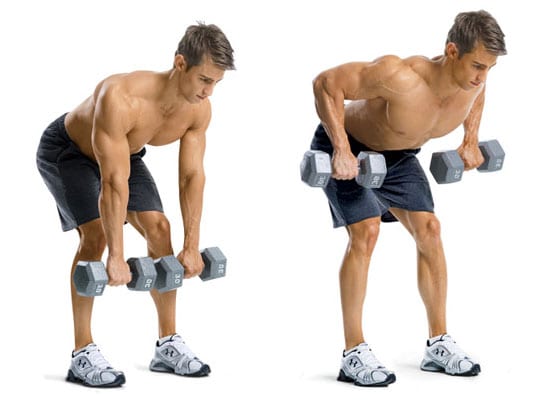
While this exercise engages the lats, it perfectly triggers the retraction of the shoulder blades.
I prefer to perform this exercise with dumbbells rather than the barbell, as dumbbells allow the shoulders to rotate externally during movement, as well as a freer range of motion.
The dumbbells should be held at a 45 degree angle and raised towards the upper abdomen or lower chest.
You need to have a neutral spine, contract the abdomen, buttocks and lumbar muscles.
Remember to stay parallel to the floor as much as possible to put resistance on the trapezes.
2. Seated Cable Rowers
Any variation of seated rowing trains the trapezius if it involves pulling back the shoulder blades.
Remember to maintain the correct posture, keeping the extension of the thoracic region (middle back) and the lower back neutral. Here, too, the cables are pulled towards the upper abdomen or lower chest.
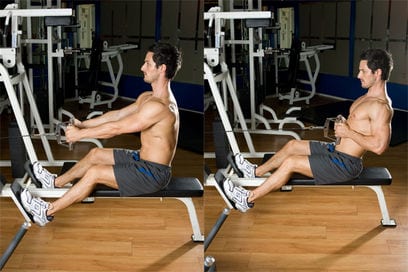
The Bottom of the Trapezes
The muscle fibers of the lower portion of the trapezius originate in the thoracic portion of the spine and enter the scapula, following a diagonal downward angle.
The main functions of the fibers are known as:
- Shoulder blade depression (pull shoulder blades down):
- Retraction of the scapula.
From this, we can determine how to train the muscle fibers.
1. Chin ups / Chin-ups with Weights / Pull-Downs with Reverse Grip
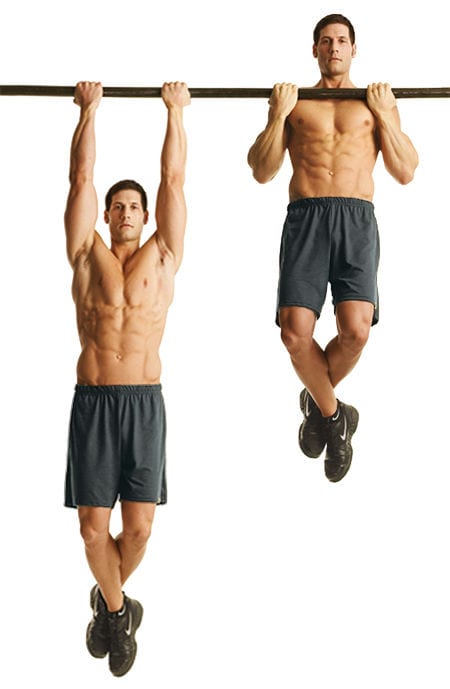
Exercises that involve vertical pull-ups train the lower fibers of the trapezius.
For example:
- pull ups
- Chin ups
- Pull-down with Prona Prona
- Pull-down with Reverse Grip
However, when choosing the exercises to perform, personal preference can come into play.
My choice of these specific exercises comes from the ability to rotate the shoulders, which will help keep the thoracic spine extended and a healthy posture.
It can be hard to get started with these exercises. Try giving strength and power a boost with a dose of Creatine!
How many sets and reps?
My preference for sets and reps is:
3 series of Shrugs Dumbbells. 6-12 reps per set.
3 series of Rowers with Dumbbells or Seated Rowers. 6-10 reps per set.
2 series of Chin-ups or Pull-downs with Reverse Grip. 6-10 reps per set.
The loads should be heavy during these exercises, however the execution must be perfect to allow the involvement of all the muscle fibers.


























